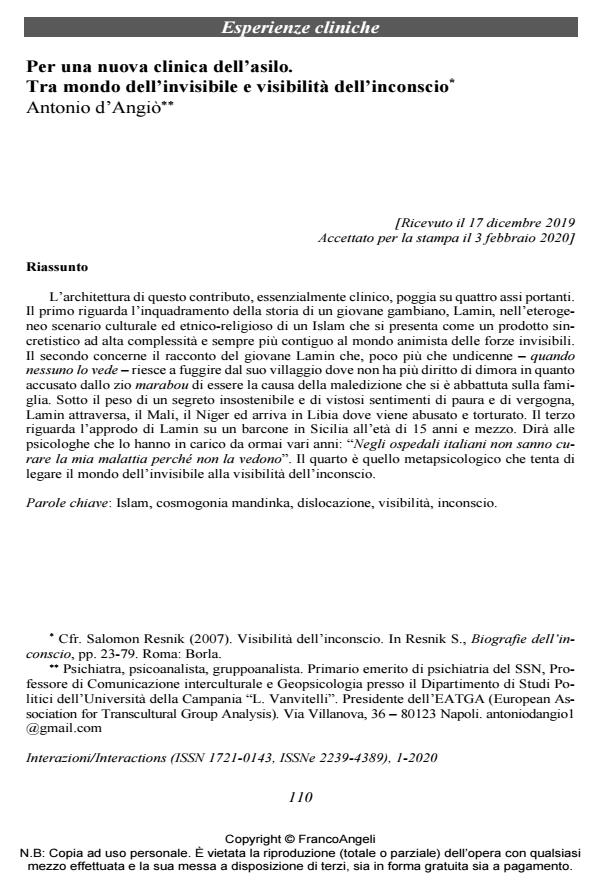For a new asylum clinic. Between world of the invisible and visibility of the unconscious
Journal title INTERAZIONI
Author/s Antonio d’Angiò
Publishing Year 2020 Issue 2020/1
Language Italian Pages 14 P. 110-123 File size 214 KB
DOI 10.3280/INT2020-001008
DOI is like a bar code for intellectual property: to have more infomation
click here
Below, you can see the article first page
If you want to buy this article in PDF format, you can do it, following the instructions to buy download credits

FrancoAngeli is member of Publishers International Linking Association, Inc (PILA), a not-for-profit association which run the CrossRef service enabling links to and from online scholarly content.
The architecture of this contribution, which is essentially clinical, is based on four pillars. The first concerns the framework of the story of a young Gambian, named Lamin, in the cul-tural and ethnic-religious scenario of an Islam that presents it self as a syncretic product of high complexity and increasingly contiguous to the animist world of invisible forces. The sec-ond concerns the report of Lamin who, just over eleven years old - when no one sees him - manages to escape from his village in which he has no longer the right to stay because he has been accused by his uncle marabou of being the cause of the curse that fell on his family. Un-der the weight of an unsustainable secret and showy feelings of fear and shame, he crosses, Mali, Niger and arrives in Libya where he is sexually abused and tortured. The third concerns Lamin’s landing on a boat in Sicily at the age of 15 and a half. He will tell the psychologists who have been taking care of him for several years: "In Italian hospitals they don’t know to cure my disease because they don’t see it". The fourth is the metapsychological one that at-tempts to link the world of the invisible to the visibility of the unconscious.
Keywords: Islam, mandinka cosmogony, dislocation, visibility, unconscious.
Antonio d’Angiò, Per una nuova clinica dell’asilo. Tra mondo dell’invisibile e visibilità dell’inconscio in "INTERAZIONI" 1/2020, pp 110-123, DOI: 10.3280/INT2020-001008